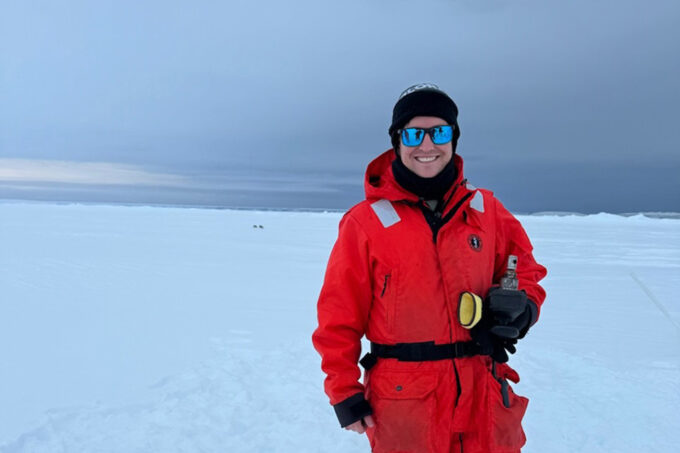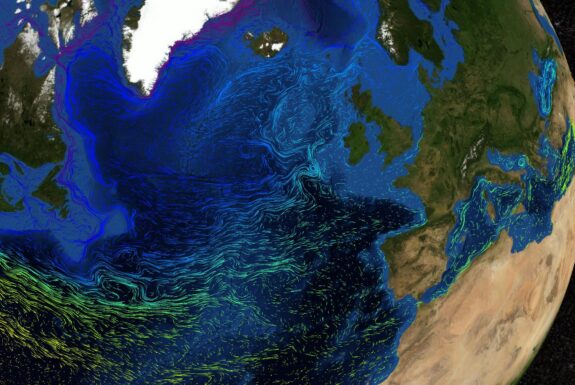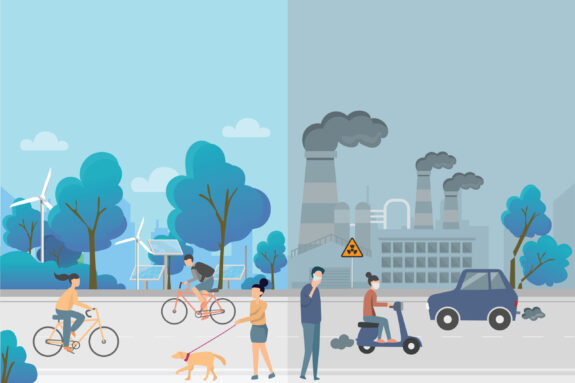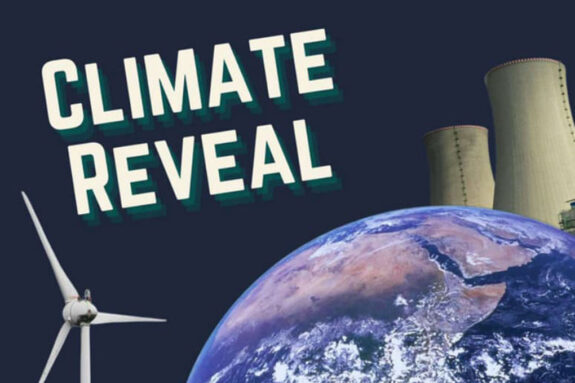3 Questions: Ryan Woosley on changes in ocean acidity and carbon

EAPS Principal Research Scientist Ryan Woosley collecting samples for total alkalinity in sea ice in the Amundsen Sea, Antarctica. Image credit: Kelcey Chung, Scripps Institute of Oceanography, University of California San Diego
MIT Center for Sustainability Science and Strategy (CS3) and Earth, Atmospheric and Planetary Sciences (EAPS) Principal Research Scientist Ryan Woosley is a marine physical chemist who specializes in the marine inorganic carbon cycle and ocean acidification. Most of his research focuses on quantifying where and how much anthropogenic carbon the oceans have taken up over the last several decades. He also works to improve the precision and accuracy of carbon and pH measurements in the ocean, and evaluate the impact of marine carbon dioxide removal interventions on marine chemistry. Woosley earned his BS in Oceanography from the Florida Institute of Technology and PhD from the University of Miami, where he served as a postdoc and assistant scientist before starting work at MIT.
Q: How did you become interested in the marine inorganic carbon cycle and ocean acidification?
A: As a kid I was always very interested in science and math, especially chemistry. When I was a high school freshman in Colorado, my biology teacher told us about this oceanography field trip to San Diego, and I was lucky enough to go. It was my first time seeing the ocean, and I just loved it. When applying to colleges, I discovered the field of marine chemistry, and ended up majoring in oceanography with a concentration in chemistry at Florida Institute of Technology. One of my term papers was on the use of iron fertilization—adding iron to the ocean to spark a phytoplankton bloom that would draw down carbon dioxide from the atmosphere and thereby slow climate change.
While writing that paper, I reached out to a chemistry professor who became my advisor at the University of Miami, where I was a PhD student, postdoc and assistant scientist. I have since spent nearly a year and a half cumulatively on research cruises as part of the international Global Ocean Ship-based Hydrographic Investigations Program (GO-SHIP) effort measuring ocean carbon and its impact on marine chemistry. A typical cruise involves around 30 scientists working in 12-hour shifts for 30 days or more collecting ocean samples for a suite of chemical, physical and biological analyses.
Q: Can you highlight your work at MIT?
A: Since starting at MIT in 2018, I’ve continued my involvement with GO-SHIP expeditions while adding a new focus on improving the precision of marine chemistry measurements. When measuring changes in ocean acidity (in terms of pH) and carbon over decades, it’s critical to ensure that any changes are real and not an artifact of our instruments or methods. By improving our methods, we can more accurately determine ocean chemistry changes and impacts, which are critical for adapting to or mitigating the effects of climate change for industries like fisheries and the public broadly.
Based on 30-40 years of marine chemistry data, we’re seeing that globally, the surface ocean is taking up carbon dioxide, but how much varies by location and time. Part of that stems from the amount of total alkalinity, or resistance to changes in pH, in the water. The more alkalinity the water has, the more carbon dioxide it can hold. Different bodies of water have different alkalinities, and this varies across decades. We’re still figuring out exactly what causes that, but it relates to changes in ocean circulation and large-scale phenomena such as El Niño that change the properties of the water and how much CO2 it takes up.
For example, scientists hypothesized that as Arctic sea ice melted, it would expose more surface area of the Arctic Ocean to the atmosphere, resulting in more CO2 uptake from the atmosphere. What I found is that there’s actually been a huge decrease in the amount of alkalinity in the Arctic due to increased fresh water from melted permafrost—leading to less CO2 uptake but above average rates of acidification. This dramatically changes the predictions of when anthropogenic CO2 gets sequestered from the atmosphere due to complex feedbacks. I’m now looking at Antarctica to see if there is a similar effect due to melting of the ice sheets.
Q: How might your research enhance human well-being?
A: The oceans are extremely valuable to society, from fisheries to recreation to ecosystem services. As ocean waters warm, and the pH decreases, it becomes harder and harder for shellfish to build and maintain their shells. Higher ocean acidity also threatens coral reefs where a lot of fish larvae develop. Informed by a better understanding of the marine inorganic carbon cycle, we can monitor changes in shellfisheries and coral reefs, and explore possible interventions. For instance, iron fertilization or other marine carbon dioxide removal technologies could reverse the ocean’s increased acidity, but we’d need to determine its impact on ecosystems and organisms. Some technologies would boost the ocean’s alkalinity, enabling the water to take up more CO2 but could have unintended consequences such as changing ecosystem composition and health.
Currently the oceans serve as a sink for a significant portion—up to a third—of anthropogenic carbon from the atmosphere, and climate change would be much worse otherwise. Monitoring where that carbon is going is important to understanding the future of the global climate. And exploring potential marine carbon dioxide removal interventions—including how to design experiments to ensure reliable results, which I’m now doing—could provide viable options for future climate mitigation.


